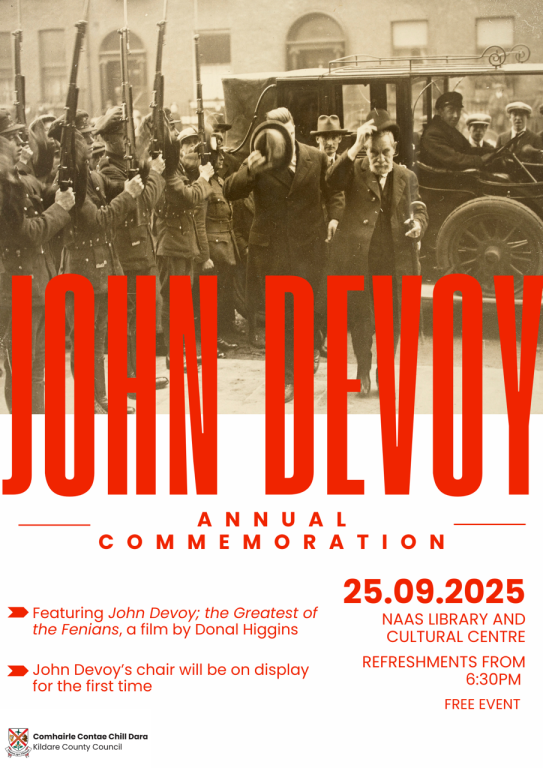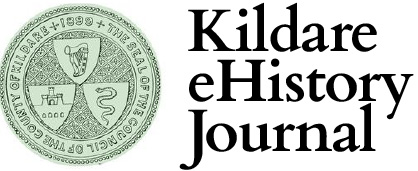Annual John Devoy Commemoration in Naas Library and Cultural Centre

Kildare County Council is delighted to announce the donation of John Devoy’s chair to its County Archives. The chair was donated by Frank MacGabhann, a grand nephew of Alice Cumiskey (née Carragher) and Lily Carragher, who cared for John Devoy in his final years in the United States. It was transported to Ireland earlier this year, with assistance from the Department of Foreign Affairs, the Irish Consulate in New York and the Department of Culture, Communications and Sport.
The chair will be available for public viewing at the annual John Devoy Commemoration in Naas Library and Cultural Centre on 25 September at 7pm. All welcome to this free event. Refreshments from 6.30pm.
This annual event, organised by the Friends of John Devoy, is held to commemorate the renowned Fenian in the county of his birth. The event will be opened by the Cathaoirleach of the County of Kildare, Cllr. Carmel Kelly, with guest speaker, Frank MacGabhann whose aunt, Alice, donated Devoy’s papers to the National Library of Ireland in 1938. She revealed to Frank that she was among the few individuals Devoy had confided in about the 1916 Rising beforehand. A short film by Donal Higgins, John Devoy: the Greatest of the Fenians, will also be shown.
This year marks ten years since the unveiling of a statue of John Devoy at Poplar Square, Naas, on 25 October 2015, by the then Cathaoirleach of the County of Kildare and the U.S. Ambassador. This was the first of Kildare County Council’s Decade of Commemorations flagship projects, in partnership with the Kildare Association of New York.
‘John Devoy was born in 1842 at Kill, Co. Kildare, in a small cottage on the main road from Naas to Dublin. He died in America in 1928, having given almost seventy years of his life to secure the freedom of Ireland. The task which he shouldered was that which had been undertaken by numbers of previous generations, the breaking of English power in Ireland. Devoy’s time as an active Fenian in Ireland was short; his time as an exile in America was, on the other hand, extremely long. The peculiar quality of tenacity he possessed served him as Fenian soldier, Fenian prisoner and Fenian exile.
At Easter, 1916, John Devoy announced the declaration of the Irish Republic to a large gathering of Irish people in New York. Tears of joy streamed down his face. He was the Fenian – almost the only one, certainly the greatest one – who lived long enough to see the fruits of freedom. He died in 1928 and is buried in Glasnevin Cemetery.’ (Michael Smyth, 1964)
